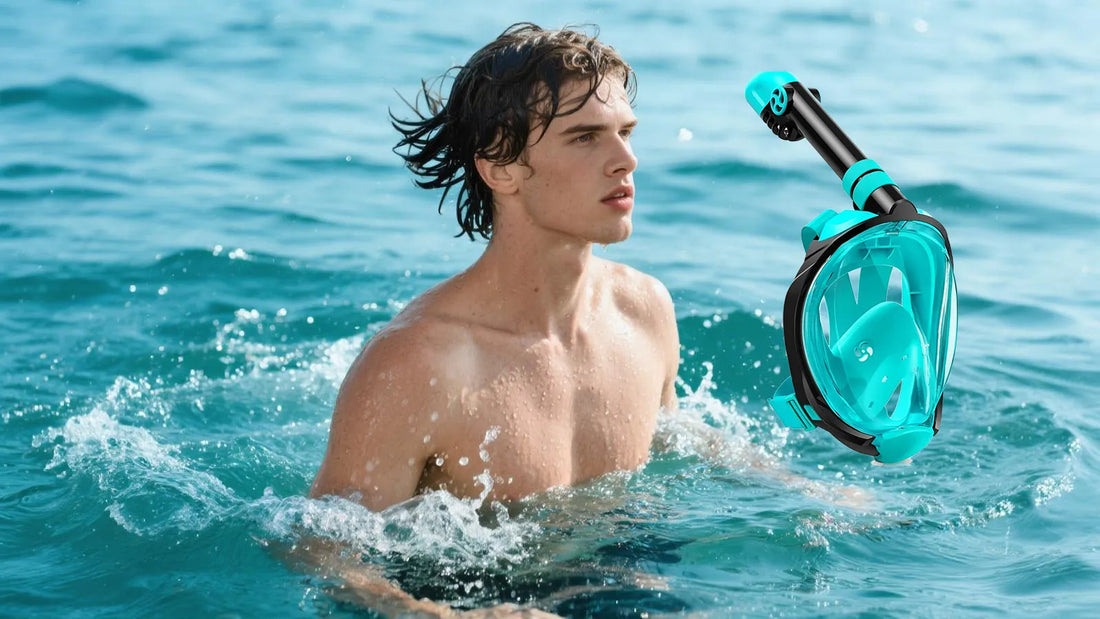Snorkeling is a thrilling activity that allows you to explore the underwater world, but it requires proper breathing techniques to ensure safety and enjoyment. Whether you're a beginner or an experienced snorkeler, understanding how to breathe when snorkeling is crucial. This guide will walk you through the essentials, from selecting the right gear to mastering relaxation methods that enhance your experience.
Understanding the Basics of Snorkeling Breathing
Breathing through a snorkel might seem simple, but it requires practice and patience. Unlike regular breathing, snorkeling involves inhaling and exhaling through a tube while your face is submerged in water. This can feel unnatural at first, but with the right techniques, it becomes second nature.
Choosing the Right Snorkel
The first step to mastering how to breathe when snorkeling is selecting the right snorkel. A well-designed snorkel should fit comfortably in your mouth and allow for easy airflow. Look for features like a comfortable mouthpiece, a purge valve to clear water, and a flexible tube that adjusts to your movements.
Practicing on Land
Before hitting the water, practice breathing through your snorkel on land. Place the mouthpiece in your mouth and breathe normally through the tube. Focus on slow, deep breaths to get accustomed to the sensation. This practice will help you feel more confident when you're in the water.
Mastering Breathing Techniques in the Water
Once you're comfortable breathing through your snorkel on land, it's time to take your skills to the water. Start in shallow water where you can stand comfortably. This allows you to practice without feeling overwhelmed.
Relax and Breathe Slowly
Relaxation is key to effective snorkeling breathing. Tension can cause shallow, rapid breaths, which can lead to discomfort or panic. Focus on taking slow, deep breaths through your snorkel. Inhale deeply through your mouth, hold for a moment, and exhale fully. This rhythm will help you conserve energy and stay calm.
Clearing Water from Your Snorkel
Water can sometimes enter your snorkel, especially if you dive below the surface. Learning how to clear water from your snorkel is an essential skill. If water enters, exhale forcefully through the tube to push the water out. Some snorkels come with a purge valve that makes this process easier.
Advanced Tips for Efficient Breathing
As you become more comfortable with snorkeling, you can focus on advanced techniques to enhance your breathing efficiency. These tips will help you stay underwater longer and enjoy your snorkeling experience to the fullest.
Use Your Diaphragm
Breathing from your diaphragm, rather than your chest, allows for deeper, more efficient breaths. This technique maximizes oxygen intake and reduces fatigue. Practice diaphragmatic breathing on land before applying it in the water.
Control Your Buoyancy
Proper buoyancy control can make breathing easier while snorkeling. Use a flotation device if needed, and avoid overexertion. Staying relaxed and maintaining a horizontal position in the water reduces strain on your breathing muscles.
Stay Hydrated
Dehydration can affect your breathing and overall performance. Drink plenty of water before and after snorkeling to stay hydrated. Avoid alcohol and caffeine, as they can dehydrate you and impair your breathing.
Common Mistakes to Avoid
Even experienced snorkelers can make mistakes that affect their breathing. Being aware of these common pitfalls can help you avoid them and enjoy a smoother snorkeling experience.
Holding Your Breath
Holding your breath while snorkeling can lead to discomfort and even panic. Always maintain a steady breathing rhythm, even if you're diving below the surface. Remember to exhale fully before inhaling again.
Overexertion
Swimming too fast or using excessive force can cause rapid, shallow breathing. Pace yourself and focus on smooth, controlled movements. This will help you conserve energy and breathe more efficiently.
Ignoring Weather Conditions
Weather conditions can impact your breathing while snorkeling. Avoid snorkeling in rough waters or strong currents, as they can make breathing more difficult. Always check the weather forecast before heading out.
Safety Tips for Snorkeling Breathing
Safety should always be your top priority when snorkeling. Following these tips will help you breathe comfortably and avoid potential hazards.
Never Snorkel Alone
Always snorkel with a buddy, even if you're an experienced swimmer. Having someone nearby ensures that you can get help if you encounter any breathing difficulties or other issues.
Know Your Limits
Don't push yourself beyond your comfort level. If you feel tired or out of breath, take a break and rest. Listening to your body is essential for a safe and enjoyable snorkeling experience.
Use Proper Equipment
Ensure that your snorkel and other equipment are in good condition before each use. A damaged snorkel can impede airflow and make breathing difficult. Regularly inspect and maintain your gear to avoid problems.
Mastering how to breathe when snorkeling is the key to unlocking the wonders of the underwater world. By following these tips and practicing regularly, you'll be able to breathe comfortably and confidently, making every snorkeling adventure a memorable one. So grab your gear, head to the water, and dive into an experience like no other!

